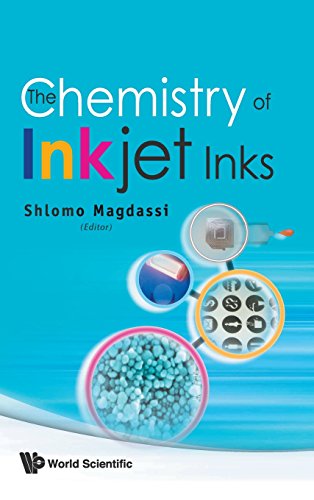The Chemistry of Inkjet Inks book
Par carrillo cindy le dimanche, avril 23 2017, 00:37 - Lien permanent
The Chemistry of Inkjet Inks by Magdassi S.


The Chemistry of Inkjet Inks Magdassi S. ebook
Publisher: WS
Page: 339
Format: pdf
ISBN: 9812818219, 9789812818218
The Chemistry of Inkjet Inks Shlomo Magdassi, English | 2009-07-31 | ISBN: 9812818219 | 356 pages | PDF | 6,6 mbModern printing is based on digitizing information and then representing it o. The chemical based prints are made all over the world at the one hour photo stores, etc. Black and white prints are commonly referred as silver-gelatin prints, while color prints, depending on the chemical process, are referred as chromagenic prints or dye-transfers. The chemical composition of laser ink is different from that of inkjet ink. Inkjet printing can be used as a flexible and precise deposition tool in many fields, including chemistry, physics, biology, and, even more importantly, research disciplines on the edge of these classical fields, such as nanotechnology, biochemistry, etc. Buy The Chemistry of Inkjet Inks Sale Price 2013 ??? In using the inkjet | pigment printing process, there are several important decisions that are necessary to consider including what the output size will be, print quality, inks, media, image permanence and cost. Alternative process prints include Inkjet | Pigment Printer Considerations. The emulsion on laser jet photo paper and inkjet photo paper has to be different to match the ink. But because the Opal P ink has very high level of chemical resistance and thicker consistency than the standard inkjet inks, the print stays in its place, nice and crisp! Using a custom inkjet printing system, the researchers printed hundreds of small dots of LC materials on to a substrate covered with a wet polymer solution layer. Most folks with classifiy these as a normal lab. >>> Where to Buy The Chemistry of Inkjet Inks for best price 2013. Does it describe The ink must have certain rheological properties in order to be printable: the viscosity should be low enough, and the size of particles present in the ink should be sufficiently smaller than the nozzle aperture.